
The hallucinatory, poetic visuals of Raoul Ruiz's Three Crowns of the Sailor slowly unfurl the contours of the chilling story that a sailor (Jean-Bernard Guillard) tells to a fellow nighttime wanderer (Philippe Deplanche) over the course of an evening of drunken conversation. As befits this boozy storytelling, the film is continually adrift, its narrative as hazy as Ruiz's sun-drenched visuals, which bathe the film in bright, brilliant sun glare that obscures more than it illuminates. The fractured narrative conspires with this gauzy aesthetic, and with Ruiz's self-consciously quirky sense of camera placement, in order to thoroughly destabilize the viewer. There is no steady mooring, and the viewer quickly becomes as lost as the man who is hearing this story. Over the course of the film, as the sailor describes his adventures aboard a mysterious vessel, the story's outline and purpose become clearer, evoking various seafaring legends while leading towards a final moment of recognition that's narratively satisfying but somewhat beside the point. This fractured story is, at most, a foundation for Ruiz, who uses the sailor's tale of woe primarily as an excuse for his dazzling flights of visual imagination.
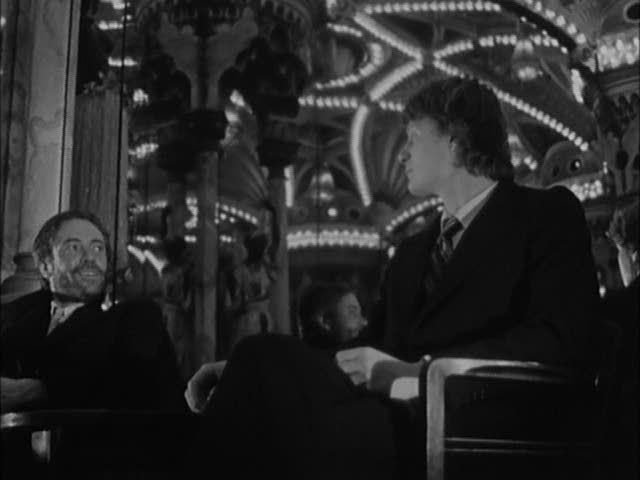
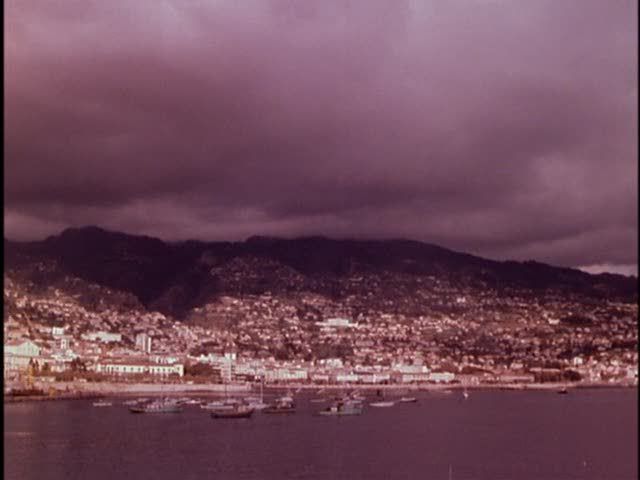
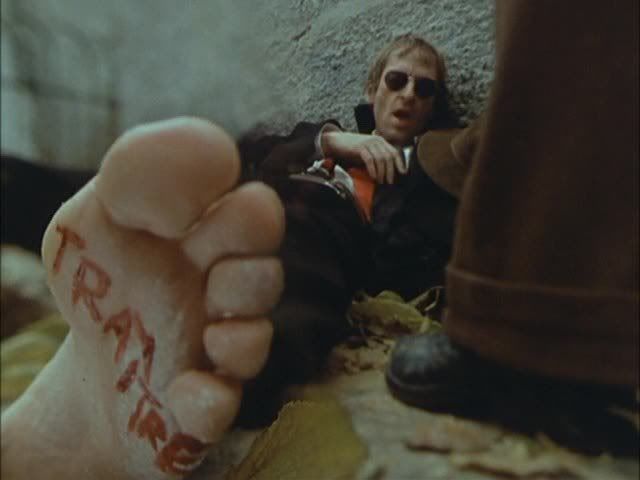


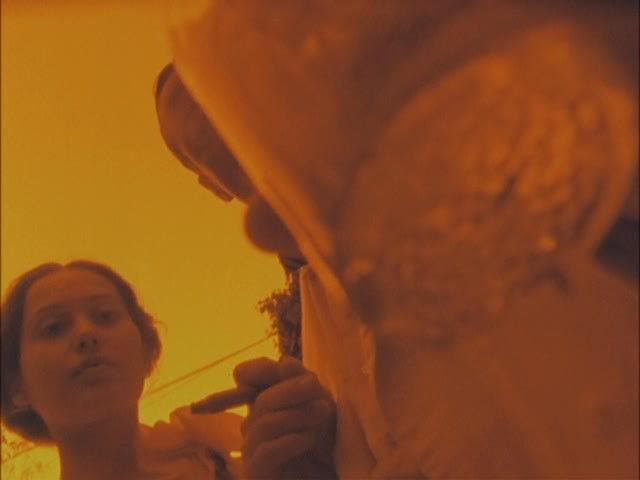
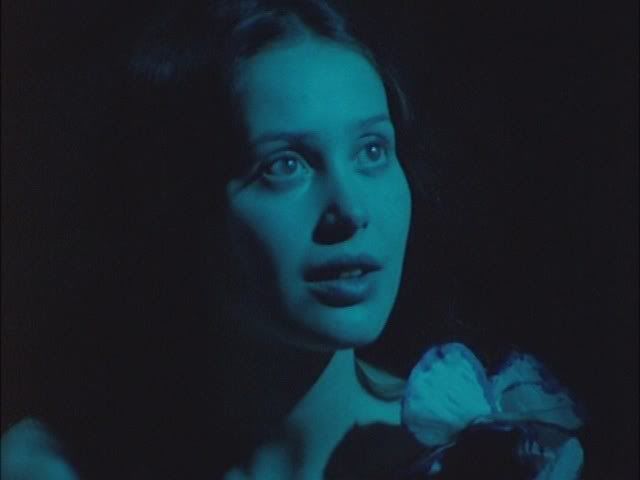
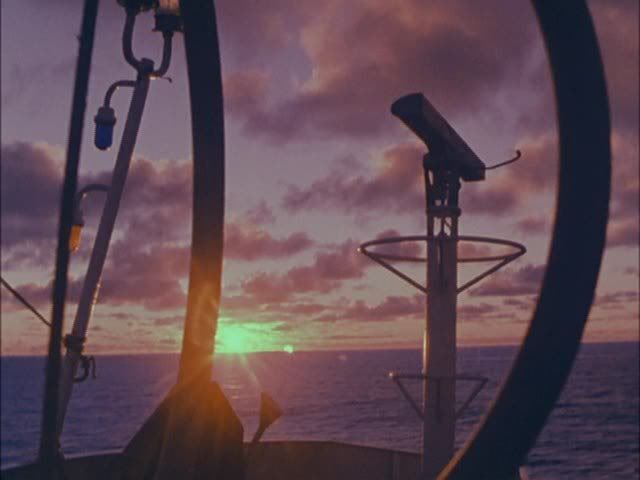


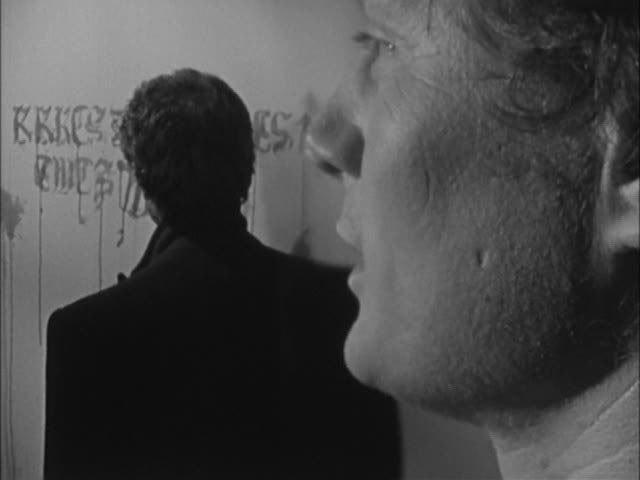
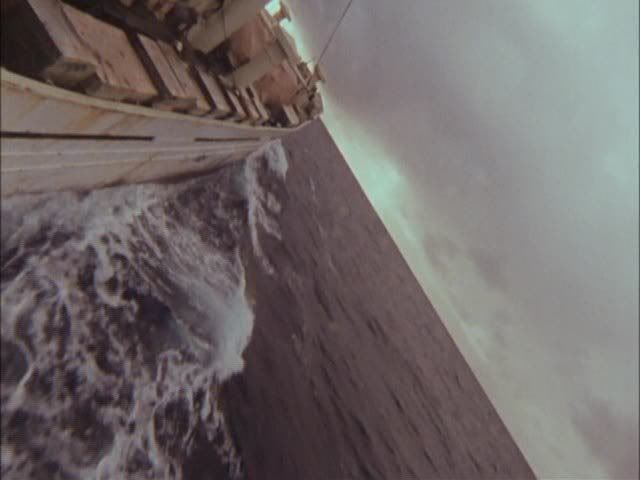


10 comments:
Whoa...I've never even heard of this...a rare occurrence! Great pics though. I'll have to check this out.
Ruiz is amazing, you should definitely give it a look. It's available on DVD here in region 1 (at the link above), and there's also a fine region 2 box set that also includes Ruiz's Hypothesis of the Stolen Painting, another remarkable film, which takes a faux-documentary approach where an art historian weaves an insanely complicated story around a series of paintings. Ruiz is one of the overlooked greats, though he's better represented on DVD now than he was even a few years ago.
I pretty much came to post exactly what James already did above, so now what do I do?
Hell, I'll just reiterate it...Beautiful screencaps. I've never heard of the film (though I've heard of Ruiz), but I absolutely want to see this now. I particularly like that tilted view of the horizon from the ship. Kinda got a bit seasick just looking at that frame...
Just browsing through IMDB and I noticed Ruiz did "Klimt" (2006). I keep picking that up in my rental store and then putting it back down.
Any opinions?
Nice, I hope lots more people check out this film. Bob, there's a real woozy, hallucinatory vibe to this film in general, and the rocking of the boat (and sea shanty music) is a big part of that.
I have not seen Klimt, though I've heard that it's very strange and sort of an atypical Ruiz -- though considering the breadth of his work and how little is available on DVD, it's not altogether clear what a "typical" Ruiz film might be. I'd highly recommend that anyone who has not seen any Ruiz before start with this film, Hypothesis of the Stolen Painting, and the macabre, charming Ce jour-la (AKA That Day), all of which are readily available on R1 DVD.
Hi Ed--very very belated comment, but what the heck. It caught my eye as I was looking through the top comics of the decade list (and thanks!)
I don't know if you noticed, but the story is a version of "The Rhyme of the Ancient Mariner." And, knowing your interest in comics, this might amuse you: when I was in college and a film student, Ruiz came to talk to our film class. By this time I had already seen "Three Crowns," "Hypothesis," and he was one of my favorite directors already, so I was thrilled. I got a chance to hang out with him afterward, and asked about the similarities I thought I saw between "Three Crowns" and "Corto Maltese." He answered yes, of course, he likes Pratt, but most of the compositions in the movie, and even the way compositions changed from shot to shot, were influenced by Milton Caniff's "Terry and the Pirates."
That's some fascinating stuff, Andrei, thanks for commenting. I had always sort of assumed that the oddball compositions in this film were Ruiz's tribute/parody to Orson Welles' habit of placing the camera in the weirdest positions to get striking shots. Now that you mention it, though, there is something comic-like about the progression from one carefully arranged composition to another in sequence. I wouldn't have thought of Caniff in relation to this film at all, but that's a great revelation.
Admittedly, I was asking him about comics, so maybe his answer was particularly focused on comics for that reason. I'm sure he had other sources too. But what he said he really liked about Caniff is how he regularly broke the 180-degree axis rule, and his use of unexpected new compositions from panel to panel, even when staying within the same scene, so that you had to re-orient yourself each time... Ruiz said he did the same thing in the film (the use of obstrusive foreground elements also plays into this)--but, and this is me speaking here, I would say the effect is significantly more disorienting in film than in comics. Because film is so time-bound, you don't have the leisure to get used to the new composition after each edit, and if the editing is fast enough, it can really throw you. Caniff really does do this (I remember after talking to Ruiz I went to the comic-book store and grabbed whatever Terry reprints I could find, to check it out), but because comics-reading does not have a single, linear, temporally-restricted way of reading, it doesn't throw you off so much. Bernie Krigstein also always used to break the 180 degree rule, but it rarely felt disorienting.
Those are great points, Andrei. When you mentioned Caniff, I instantly pictured all those great sequences where he'd rotate his "camera" into completely skewed perspectives with each new panel. The thing with doing that in comics is that each panel can stand alone to some extent; you can read and understand the panel in isolation and then relate it to the panels around it even if they're all from different perspectives. In film, as you say, the constant stream of images doesn't allow for that luxury, and Ruiz's woozy shifts of perspective can be really disorienting, as they're intended to be — adding, with the constant rocking of the boat, to the fever-dream haziness of the film.
Amazing film, I first saw it at a cinema in Toronto about 25yrs ago. After the film I went to the washroom and after a few seconds of looking for the urinals, I noticed that the men's washroom was full of women. It took a little longer to realize I was actually in the women's, not that it seemed all that important.
Afterwards I had to run to catch up with my friend, he'd turned around and finding me gone had assumed that I'd disappeared. He was debating with himself whether or not to wait till he got home to phone my house and tell my roommates, that I no longer existed.
I'm still amazed that none of the women seemed at all surprised or concerned that there was a man standing in the middle of their washroom.
Bought the DVD recently and it's still one of my favourite films.
Post a Comment